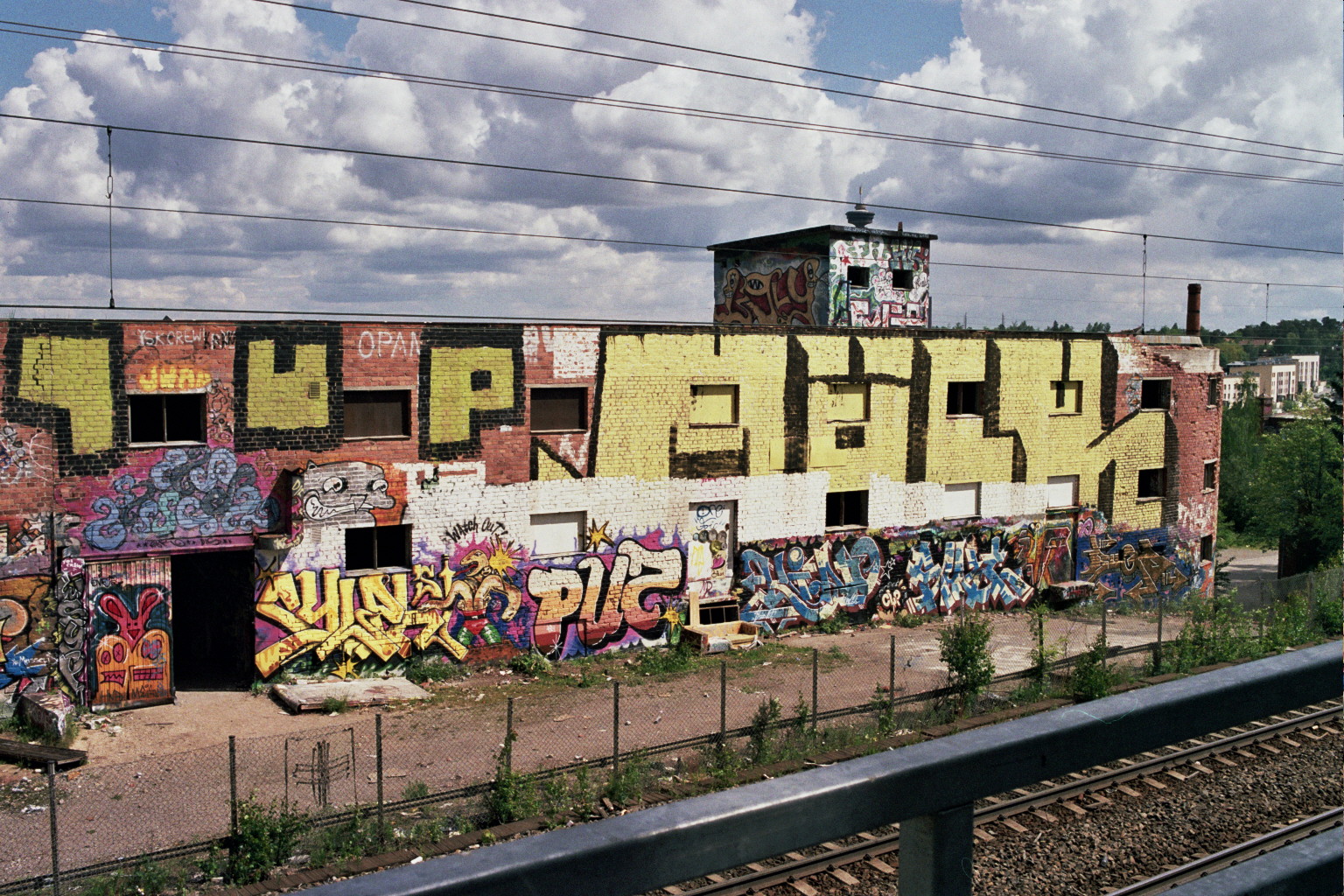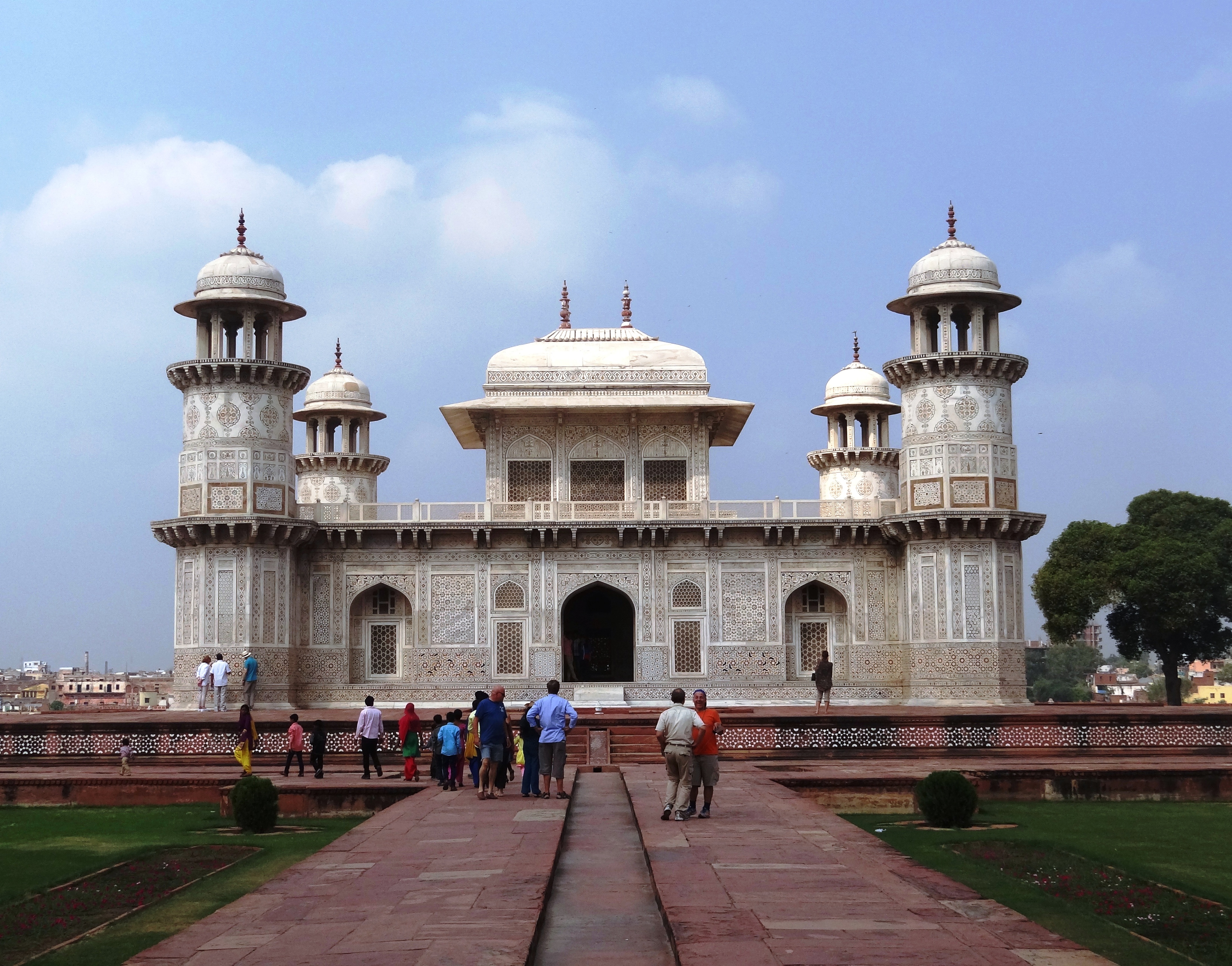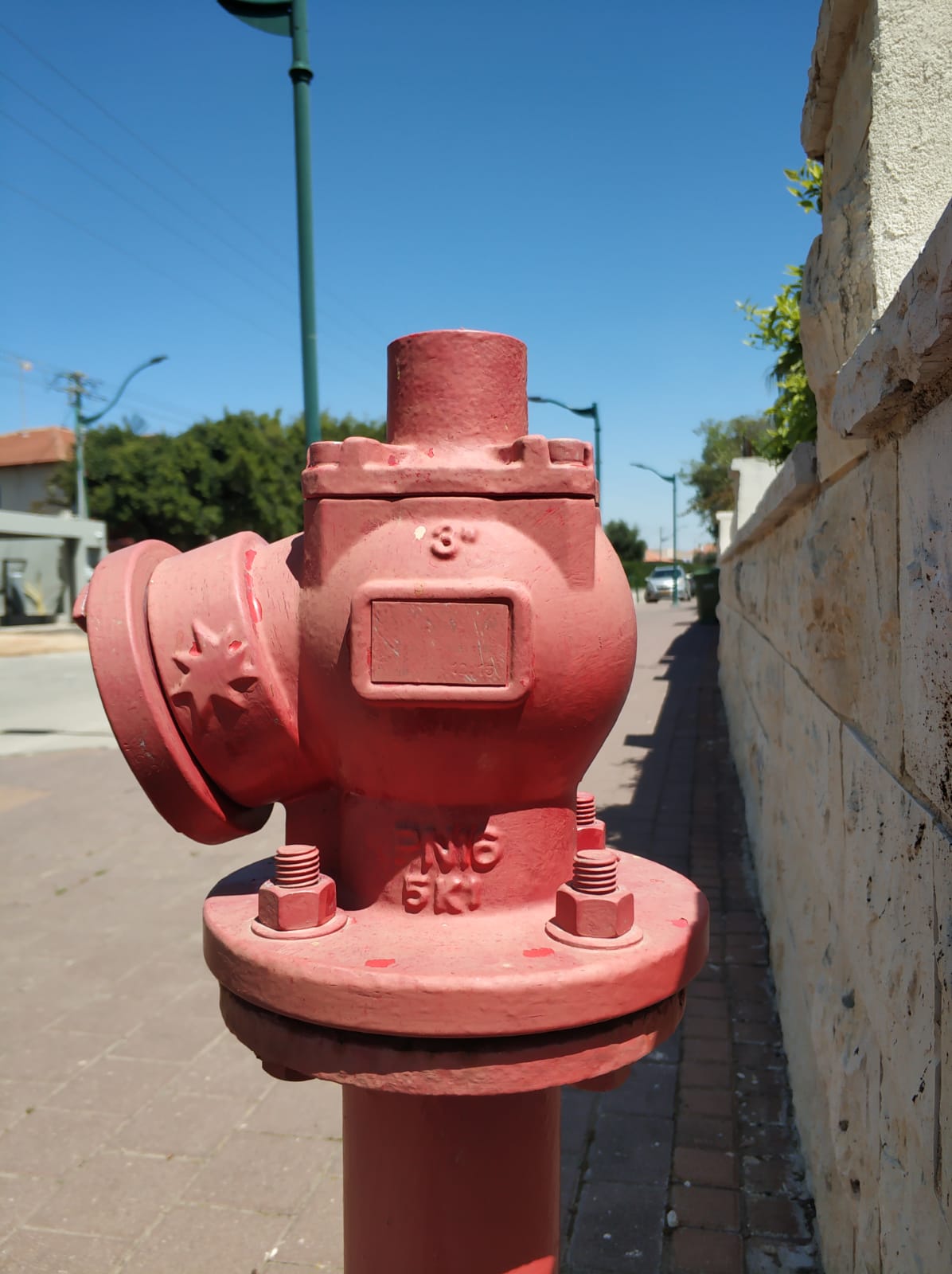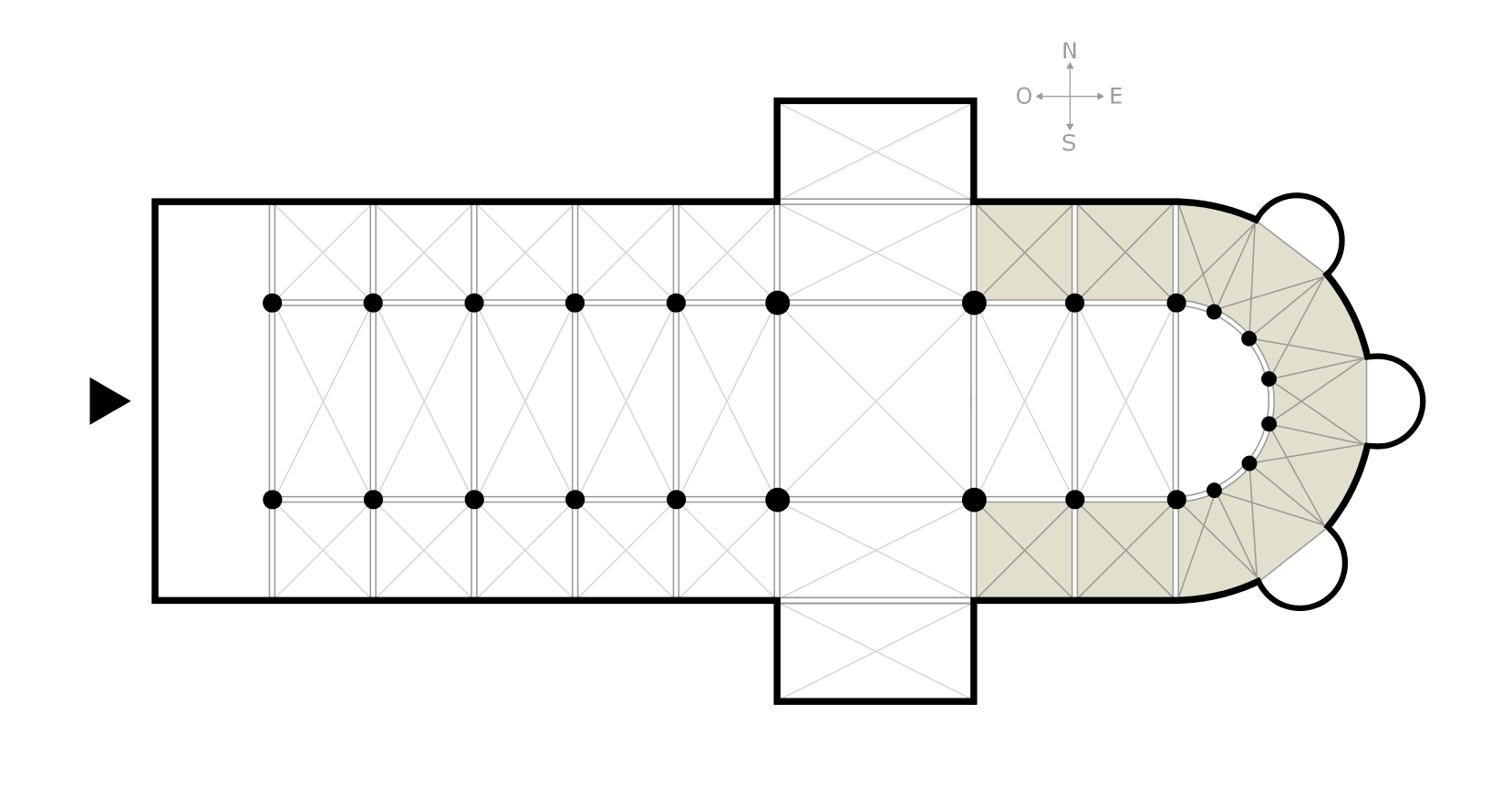|
Tomb Of Nadira Begum
The Tomb of Nadira Begum ( ur, ) is a Mughal era tomb in the city of Lahore, Pakistan, which houses the tomb of Mughal princess Nadira Banu Begum, wife of Prince Dara Shikoh. Background Nadira was the wife of Dara Shikoh, who served as the governor of Lahore in the 1640s. In 1659, Dara was fighting his brother Aurangzeb for the Mughal throne. After Dara's defeat in the Battle of Deorai, he and his wife tried to flee to Iran through the Bolan Pass, but Nadira died of dysentery and exhaustion. Though Dara's troops were depleted, he sent his remaining soldiers to carry his wife's body from the pass to Lahore, to be buried near the shrine of Mian Mir, whom both considered to be their "spiritual guide". History The tomb is believed to have been robbed of all costly marbles and semi-precious stones during Ranjit Singh's rule, leaving it in a "dilapidated" state. The tomb is also a prey to "contemporary vandalism" which is evident from the gaudy graffiti on the mausoleum "with the ugl ... [...More Info...] [...Related Items...] OR: [Wikipedia] [Google] [Baidu] |
Graffiti
Graffiti (plural; singular ''graffiti'' or ''graffito'', the latter rarely used except in archeology) is art that is written, painted or drawn on a wall or other surface, usually without permission and within public view. Graffiti ranges from simple written words to elaborate wall paintings, and has existed Graffito (archaeology), since ancient times, with examples dating back to ancient Egypt, ancient Greece, and the Roman Empire. Graffiti is a controversial subject. In most countries, marking or painting property without permission is considered by property owners and civic authorities as defacement and vandalism, which is a punishable crime, citing the use of graffiti by street gangs to mark territory or to serve as an indicator of gang-related activities. Graffiti has become visualized as a growing urban "problem" for many cities in industrialized nations, spreading from the New York City Subway nomenclature, New York City subway system and Philadelphia in the early 1970s to ... [...More Info...] [...Related Items...] OR: [Wikipedia] [Google] [Baidu] |
Mughal Tombs
Mughal or Moghul may refer to: Related to the Mughal Empire * Mughal Empire of South Asia between the 16th and 19th centuries * Mughal dynasty * Mughal emperors * Mughal people, a social group of Central and South Asia * Mughal architecture * Mughlai cuisine * Mughal painting Other uses * Moghulistan in Central Asia ** Moghol people * Moghul, Iran, a village * Mirza Mughal (1817–1857), a Mughal prince * Fiyaz Mughal, founder of Tell MAMA Tell MAMA (Measuring Anti-Muslim Attacks) is a national project which records and measures anti-Muslim incidents in the United Kingdom. It is modelled on the Jewish Community Security Trust (CST) and like the CST it also provides support for vi ... See also * Mogul (other) * Mughal-e-Azam (other) {{disambiguation ... [...More Info...] [...Related Items...] OR: [Wikipedia] [Google] [Baidu] |
Architecture Of Lahore
The Architecture of Lahore reflects the history of Lahore and is remarkable for its variety and uniqueness. There are buildings left from the centuries of rule of the Mughal Empire, the Sikh Empire, as well as from the era of the British Raj, whose style is a mixture of Victorian and Islamic architecture often referred to as Indo-Saracenic. In addition, there are newer buildings which are very modern in their design. Unlike the emphasis on functional architecture in the west, much of Lahore's architecture has always been about making a statement as much as anything else. The old city houses a number of examples of architecture of Lahore, which have a strong influence of the Mughal style. Department of archaeology has excavated many architectural remains of the buildings that were built during the rule of Rama of Ayodhya. Thus it can be said that though many buildings of Lahore carry Muslim heritage, they also have the influence of other religions such as Sikhism, Hinduism, J ... [...More Info...] [...Related Items...] OR: [Wikipedia] [Google] [Baidu] |
Mausoleums In Punjab, Pakistan
A mausoleum is an external free-standing building constructed as a monument enclosing the interment space or burial chamber of a deceased person or people. A mausoleum without the person's remains is called a cenotaph. A mausoleum may be considered a type of tomb, or the tomb may be considered to be within the mausoleum. Overview The word ''mausoleum'' (from Greek μαυσωλείον) derives from the Mausoleum at Halicarnassus (near modern-day Bodrum in Turkey), the grave of King Mausolus, the Persian satrap of Caria, whose large tomb was one of the Seven Wonders of the Ancient World. Historically, mausolea were, and still may be, large and impressive constructions for a deceased leader or other person of importance. However, smaller mausolea soon became popular with the gentry and nobility in many countries. In the Roman Empire, these were often in necropoles or along roadsides: the via Appia Antica retains the ruins of many private mausolea for kilometres outside Rome. Wh ... [...More Info...] [...Related Items...] OR: [Wikipedia] [Google] [Baidu] |
Tombs In Lahore
A tomb ( grc-gre, τύμβος ''tumbos'') is a repository for the remains of the dead. It is generally any structurally enclosed interment space or burial chamber, of varying sizes. Placing a corpse into a tomb can be called ''immurement'', and is a method of final disposition, as an alternative to cremation or burial. Overview The word is used in a broad sense to encompass a number of such types of places of interment or, occasionally, burial, including: * Architectural shrines – in Christianity, an architectural shrine above a saint's first place of burial, as opposed to a similar shrine on which stands a reliquary or feretory into which the saint's remains have been transferred * Burial vault – a stone or brick-lined underground space for multiple burials, originally vaulted, often privately owned for specific family groups; usually beneath a religious building such as a church ** Cemetery ** Churchyard * Catacombs * Chamber tomb * Charnel house * Church mon ... [...More Info...] [...Related Items...] OR: [Wikipedia] [Google] [Baidu] |
Nastaliq
''Nastaliq'' (; fa, , ), also romanized as ''Nastaʿlīq'', is one of the main calligraphic hands used to write the Perso-Arabic script in the Persian language, Persian and Urdu languages, often used also for Ottoman Turkish poetry, rarely for Arabic language, Arabic. ''Nastaliq'' developed in Iran from ''Naskh (script), naskh'' beginning in the 13th century and remains very widely used in Pakistan, Iran, Afghanistan and as a minority script in India and other countries for written poetry and as a form of art. History The name ''nastaliq'' "is a contraction of the Persian , meaning a hanging or suspended ''Naskh (script), naskh''". Virtually all Safavid Iran, Safavid authors (like Dust Muhammad or Ahmad Monshi Ghomi, Qadi Ahmad) attributed the invention of to Mir Ali Tabrizi, who lived at the end of the 14th and the beginning of the 15th century. That tradition was questioned by Elaine Wright, who traced evolution of ''nastaliq'' in 14th century Iran and showed how it de ... [...More Info...] [...Related Items...] OR: [Wikipedia] [Google] [Baidu] |
Quran
The Quran (, ; Standard Arabic: , Quranic Arabic: , , 'the recitation'), also romanized Qur'an or Koran, is the central religious text of Islam, believed by Muslims to be a revelation from God. It is organized in 114 chapters (pl.: , sing.: ), which consist of verses (pl.: , sing.: , cons.: ). In addition to its religious significance, it is widely regarded as the finest work in Arabic literature, and has significantly influenced the Arabic language. Muslims believe that the Quran was orally revealed by God to the final prophet, Muhammad, through the archangel Gabriel incrementally over a period of some 23 years, beginning in the month of Ramadan, when Muhammad was 40; and concluding in 632, the year of his death. Muslims regard the Quran as Muhammad's most important miracle; a proof of his prophethood; and the culmination of a series of divine messages starting with those revealed to Adam, including the Torah, the Psalms and the Gospel. The word ''Quran'' occurs some ... [...More Info...] [...Related Items...] OR: [Wikipedia] [Google] [Baidu] |
Inch
Measuring tape with inches The inch (symbol: in or ″) is a unit of length in the British imperial and the United States customary systems of measurement. It is equal to yard or of a foot. Derived from the Roman uncia ("twelfth"), the word ''inch'' is also sometimes used to translate similar units in other measurement systems, usually understood as deriving from the width of the human thumb. Standards for the exact length of an inch have varied in the past, but since the adoption of the international yard during the 1950s and 1960s the inch has been based on the metric system and defined as exactly 25.4 mm. Name The English word "inch" ( ang, ynce) was an early borrowing from Latin ' ("one-twelfth; Roman inch; Roman ounce"). The vowel change from Latin to Old English (which became Modern English ) is known as umlaut. The consonant change from the Latin (spelled ''c'') to English is palatalisation. Both were features of Old English phonology; see ... [...More Info...] [...Related Items...] OR: [Wikipedia] [Google] [Baidu] |
Ambulatory
The ambulatory ( la, ambulatorium, ‘walking place’) is the covered passage around a cloister or the processional way around the east end of a cathedral or large church and behind the high altar. The first ambulatory was in France in the 11th century but by the 13th century ambulatories had been introduced in England and many English cathedrals were extended to provide an ambulatory. The same feature is often found in Indian architecture and Buddhist architecture generally, especially in older periods. Ritual circumambulation or parikrama around a stupa or cult image is important in Buddhism and Hinduism. Often the whole building was circumambulated, often many times. The Buddhist chaitya hall always allowed a path for this, and the Durga temple, Aihole (7th or 8th century) is a famous Hindu example. The term is also used to describe a garden feature in the grounds of a country house. A typical example is the one shown, which stands in the grounds of Horton Court in Glouce ... [...More Info...] [...Related Items...] OR: [Wikipedia] [Google] [Baidu] |
Foot (unit)
The foot ( feet), standard symbol: ft, is a unit of length in the British imperial and United States customary systems of measurement. The prime symbol, , is a customarily used alternative symbol. Since the International Yard and Pound Agreement of 1959, one foot is defined as 0.3048 meters exactly. In both customary and imperial units, one foot comprises 12 inches and one yard comprises three feet. Historically the "foot" was a part of many local systems of units, including the Greek, Roman, Chinese, French, and English systems. It varied in length from country to country, from city to city, and sometimes from trade to trade. Its length was usually between 250 mm and 335 mm and was generally, but not always, subdivided into 12 inches or 16 digits. The United States is the only industrialized nation that uses the international foot and the survey foot (a customary unit of length) in preference to the meter in its commercial, ... [...More Info...] [...Related Items...] OR: [Wikipedia] [Google] [Baidu] |
Ranjit Singh
Ranjit Singh (13 November 1780 – 27 June 1839), popularly known as Sher-e-Punjab or "Lion of Punjab", was the first Maharaja of the Sikh Empire, which ruled the northwest Indian subcontinent in the early half of the 19th century. He survived smallpox in infancy but lost sight in his left eye. He fought his first battle alongside his father at age 10. After his father died, he fought several wars to expel the Afghans in his teenage years and was proclaimed as the "Maharaja of Punjab" at age 21. His empire grew in the Punjab region under his leadership through 1839. Prior to his rise, the Punjab region had numerous warring misls (confederacies), twelve of which were under Sikh rulers and one Muslim. Ranjit Singh successfully absorbed and united the Sikh misls and took over other local kingdoms to create the Sikh Empire. He repeatedly defeated invasions by outside armies, particularly those arriving from Afghanistan, and established friendly relations with the Britis ... [...More Info...] [...Related Items...] OR: [Wikipedia] [Google] [Baidu] |


.jpeg/1200px-Taj_Mahal_(Edited).jpeg)






